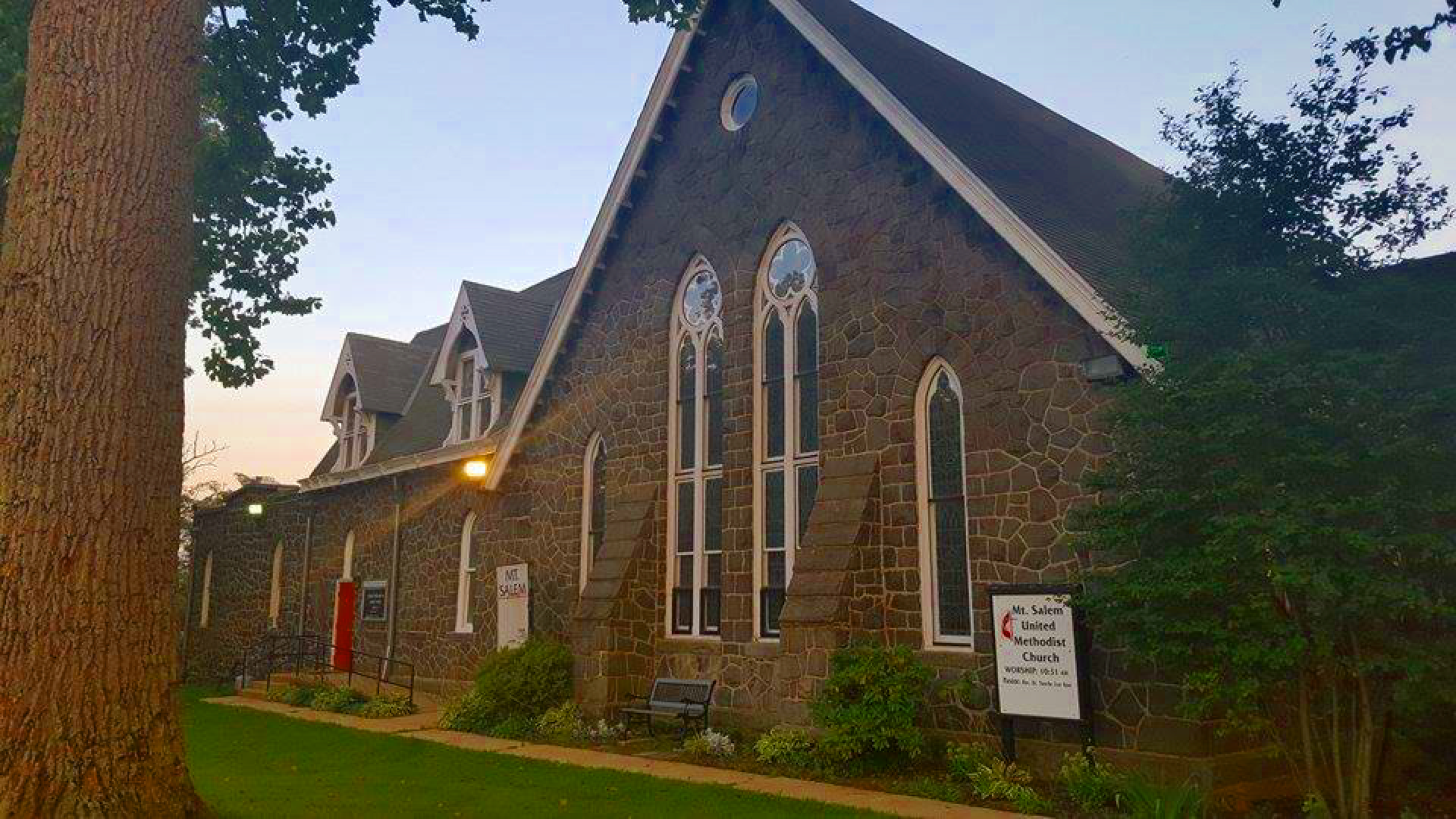
MOUNT SALEM IN ROCKFORD PARK
C O N N E C T

Our Mission
Revive, renew and extend the traditional congregation and explore alternative Christian forms to equip participants to lead the neighborhood into God’s dream for our human community: love, peace, charity, mercy, forgiveness, opportunity and justice.
About us
Remembering our former pastor John Holden
February 14, 1942 to October 9, 2022
Reverend John J. Holden
Born and raised in Cleveland, Ohio, John was active in the Pearl Road Methodist Church throughout his developmental years. He was president of the local and West Sub-district Methodist Youth Fellowships. He graduated Parma Senior High School in 1960.
John graduated Ohio University in 1964. While there he was a member of the Sigma Alpha Epsilon social fraternity, president of the Wesley Foundation and the Campus Religious Council, and vice president of the Ohio Methodist Student Movement.
During the summer of 1964, John was a summer intern in the (Cleveland) Inner City Protestant Parish at the Downtown Baptist Church, working with “street people.”
In May, 1967, John graduated from Union Theological Seminary in New York City with an emphasis in Practical Theological. While in New York, he worked as a Minister to Students for two and a half years at the North Presbyterian Church in the Washington Heights section of the City.
On recommendation of Pearl Road Church, the North-East Ohio Annual Conference ordained John a deacon in June, 1965. After completing seminary, in 1967 he had his conference membership transferred to the Peninsula-Delaware Annual Conference, where he was first employed by the Methodist Action Program for five years. In 1972 he was ordained an elder.
John’s Peninsula-Delaware Conference appointments are the following:
1967 to 1972 - Harrison Street United Methodist Church, Associate Pastor.
1972 to 1976 - Harrison Street United Methodist Church, Pastor.
1976 to 1981 - West End Neighborhood House, Executive Director.
1981 to 1988 - Chestertown-Pomona Charge, Pastor.
1988 to 1993 - Silverbrook United Methodist Church, Pastor.
1993 to 1999 - Methodist Action Program, Executive Director.
1999 to 2014 - Mt. Salem United Methodist Church, Pastor.
2014 to 2020 - Supernumerary Retirement.
2020 to 2022 - Mt. Salem United Methodist Church, Pastor.
For more than fifty years the urban setting has been the focal point of John’s calling and commitment to ministry. His studies in practical theology at Union Theological Seminary were focused on urban ministry. Most of his pastoral appointments were in the City of Wilmington as were his assignments directing the West End Neighborhood House and the Methodist Action Program. His family continues to live in the Delaware Valley.
John’s ministry commitments and interests were:
1. Renewal, revitalization, and/or redevelopment of presently failing congregations.
2. Neighborhood and community programs and processes to empower thriving.
3. Explorations in secular Christianity.
The History of Mt. Salem
Mt. Salem Church grew out of a community Sunday School movement. Before any public schools, starting in 1814 or 1815, the Brandywine Manufacturers’ Sunday School program of reading, writing, and ciphering along with Bible lessons was first conducted on the floor of a mill and then in its own building at the DuPont Powder Works. As public education became available the Brandywine Manufacturer’s Sunday School evolved into four Christian congregations. In 1841, St. Joseph on the Brandywine Roman Catholic Church (President Biden’s Church) was formed, dropping out of the Sunday School. Our Mt. Salem Methodist Church was founded in 1847, leaving the Sunday School movement. In 1851, a third group withdrew from the Sunday School to organize the Greenhill Presbyterian Church. Finally, in 1856, the Brandywine Manufacturers’ Sunday School closed as Christ Episcopal Church opened for its people.
Methodist Sunday Schools as well as Class and Prayer Meetings were initially held in the Gilpin Paper Mill at Riddle’s Banks and in homes throughout the community. The Mt. Salem Church was then organized in 1847 to serve mostly the workers in the several mills along the Brandywine Creek.
That same year the first Mt. Salem Church building was constructed on the present West 19th Street site. Thirty-one years later it was torn down and the much larger sanctuary of the present building was opened. Three months later the church caught fire; it was renovated and rededicated in 1879. The Sunday School Building was added in 1917, completing the present facility.
The Church initially focused on the workers in the many mills along the Brandywine Creek. But, as electricity replaced water in powering manufacturing, the Brandywine mills closed and the area became home to very upscale housing, pricing out of the neighborhood many of the Church members. That, along with the general decline in religious participation over the last sixty years, caused the Mt. Salem Church to experience a substantial decline in church participation.
As the congregation approaches its 175th anniversary, a two-pronged redevelopment strategy is being developed. The traditional church program is being revised and renewed and an alternative congregation is being explored to focus on people who identify as “spiritual but not religious” or who have left the church, thinking it irrelevant to our current technological and scientific age.
Again, trusting God’s leadership, Mt. Salem Church is venturing into a new ministry and mission. To help the biblical lessons come alive to a new generation of neighbors, the Church is refocusing the Judeo-Christian themes and traditions to promote the fullness of human life. A teaching and supporting process will guide and undergird Mt. Salem Church’s offering our community the experience of “God’s dream” for our lives – love, peace, charity, mercy, forgiveness, opportunity, and (social) justice for each person.



